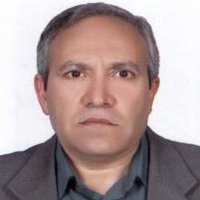Response of Lentil (Lens culinaris L.) Yield and Physiological Traits to Chemical and Bio-phosphorus Fertilizers under Different Irrigation Regimes
Author(s):
Article Type:
Research/Original Article (دارای رتبه معتبر)
Abstract:
Introduction
Different studies in semi-arid regions showed that application of phosphorus fertilizers under drought stress conditions increased the crop yield. Most agricultural soils contain larger amount of fixed form of Phosphorus (P) than available P, a considerable part of which has accumulated as a consequence of regular applications of P fertilizers. Certain microorganisms such as phosphate solubilizing bacteria fungi, actinomycetes mostly those associated with the plant rhizosphere are known to convert insoluble inorganic phosphorus into soluble form that could be utilized by the plants. Among them, some phosphate-solubilizing bacteria (PSB) are being used as phosphatic biofertilizers for crop production. Phosphate solubilizing bacteria can solubilize fixed form of P to available form by the secretion of various kinds of organic acids, phosphatase enzyme, growth hormones etc. and increase availability of P to the plants. In this point of view, phosphatic biofertilizer may be used as an alternate option of chemical P fertilizer for lentil cultivation. Therefore, the present study was under taken to evaluate the effects of biofertilizer, chemical phosphorus and integrated application of fertilizers on yield and physiologic characteristics of lentil under drought and normal condition in karaj climate.
Materials and Methods
To evaluate the effect of drought stress on seed yield and physiological traits of lentil cultivar (Ziba) with chemical and bio phosphorus fertilizer, an experiment was conducted in split plot based on randomized complete blocks design CRBD design with four replications in research farm of University of Tehran (Karaj-Iran) during 2014-15. The main factor included three irrigation levels (irrigation after 70, 90 and 130 mm evaporation from open pan class A) and sub treatment were the kind of phosphorus fertilizers (100% super phosphate triple (P); bio-fertilizer; 50% P + bio-fertilizer; no p fertilizer and bio-fertilizer as a check) The bio-fertilizer contained co-inoculation of phosphobacterin (pseudomonas strains 93 & 187) and azotobactor. The characteristics recorded were no. of pods per plant, seed yield, seed protein content (%), relative water content (RWC), proline content and total leaf chlorophyll.For statistical analysis, analysis of variance (ANOVA) and Duncan’s multiple range test (DMRT) were performed using SAS ver. 9.2 software.
Results and Discussion
Interaction effect of irrigation and type of fertilizer had significant effect on pod number per plant, protein percentage, relative water content, free proline and chlorophyll content. The results indicated that normal irrigation (irrigation after 70 mm evaporation from open pan class A) × integrated phosphorus fertilizer (50% P + inoculation with bio-fertilizer) gave the highest seed yield. Similarly, P and bio-fertilizers application under severe drought stress condition produced higher seed yield compared to other treatments. This can be explained that PB inoculation enhanced the solubilization of phosphates in rhizosphere soil of lentil which stimulated the native Rhizobium and attributed to increase the nodule number and weight ultimately that showed positive effects on other growth and yield attributes of lentil.However, for the RWC under normal irrigation × bio-fertilizer; for the total leaf chlorophyll under normal irrigation × 100% super phosphate triple; and for the proline content under severe drought stress × 100% super phosphate triple gave the highest values. With drought stress conditions, the leaf RWC and Proline contents reduced, which represented a relationship between these physiological traits and lentil seed yield.
Conclusion
In general, from the view of reducing chemical fertilizer uses to manner the environment-friendly and cost-saving cultivation, application of 50% P + seed inoculation with bio-fertilizer based on the result of this study is recommended.Keywords:
Language:
Persian
Published:
Agroecology journal, Volume:10 Issue: 4, 2019
Pages:
1107 to 1119
magiran.com/p1956349
دانلود و مطالعه متن این مقاله با یکی از روشهای زیر امکان پذیر است:
اشتراک شخصی
با عضویت و پرداخت آنلاین حق اشتراک یکساله به مبلغ 1,390,000ريال میتوانید 70 عنوان مطلب دانلود کنید!
اشتراک سازمانی
به کتابخانه دانشگاه یا محل کار خود پیشنهاد کنید تا اشتراک سازمانی این پایگاه را برای دسترسی نامحدود همه کاربران به متن مطالب تهیه نمایند!
توجه!
- حق عضویت دریافتی صرف حمایت از نشریات عضو و نگهداری، تکمیل و توسعه مگیران میشود.
- پرداخت حق اشتراک و دانلود مقالات اجازه بازنشر آن در سایر رسانههای چاپی و دیجیتال را به کاربر نمیدهد.
In order to view content subscription is required
Personal subscription
Subscribe magiran.com for 70 € euros via PayPal and download 70 articles during a year.
Organization subscription
Please contact us to subscribe your university or library for unlimited access!




